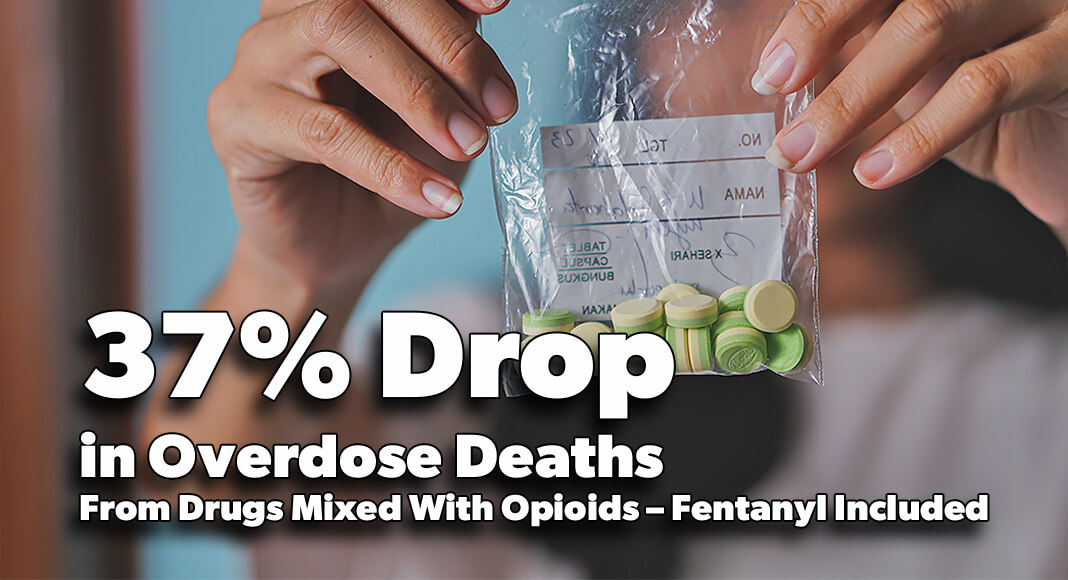
Mega Doctor News
Newswise – COLUMBUS, Ohio – Expanded treatment options, increased naloxone distribution and targeted education campaigns likely led to a 37% reduction in overdose deaths from opioids combined with stimulant drugs other than cocaine, according to the results of a large federally funded study.
The finding came from a planned study of secondary outcomes of the HEALing (Helping to End Addiction Long-Term) Communities Study (HCS), which tested an intervention encompassing data-driven adoption of evidence-based practices for reducing overdose deaths in Kentucky, Massachusetts, New York and Ohio.
Death rates from specific combinations of opioids with stimulants other than cocaine, most commonly fentanyl mixed with methamphetamine, were 8.9 per 100,000 adults in intervention communities compared to 14.1 per 100,000 adults in comparison communities that did not receive the intervention – a statistically significant difference.
The findings were published today (Oct. 21, 2024) in JAMA Network Open.
With the prescription medications that started the opioid crisis harder to obtain by the time the trial began, fentanyl was rapidly entering the illicit drug market in combination with methamphetamine, cocaine, counterfeit pills and other stimulants, said Bridget Freisthler, lead author of the new study and a professor at The Ohio State University.
“Now we have a whole new group of people developing addiction to opioids,” said Freisthler, Ohio’s principal investigator for the HEALing Communities Study. “It was nice to see that we were able to achieve reductions in overdose deaths involving this combination of opioids, primarily fentanyl and psychostimulants, not including cocaine, because that’s the most recent wave in the epidemic that we’re seeing.”
Analysis of other drug combinations showed that intervention communities had lower rates of overdose deaths from an opioid mixed with cocaine (6%) and an opioid mixed with benzodiazepine (1%), but that these differences did not reach statistical significance.
The National Institutes of Health (NIH) launched the HEALing Communities Study in 2019. Participating community coalitions implemented 615 strategies to address opioid-related overdose deaths across health care, justice and behavioral health settings. Based on data indicating which interventions were best suited to areas they served, agencies selected from three “menus” of evidence-based practices focused on overdose education and naloxone distribution, increasing exposure to medication for opioid use disorder, and safer opioid prescribing.
Researchers reported in June on the main outcome of HCS – that the intervention did not result in a statistically significant reduction in opioid overdose death rates during the evaluation period. In this study, the authors found that intervention communities had an 8% lower rate of all drug overdoses compared to control communities, which was estimated to represent 525 fewer drug overdose deaths.
In the new paper, researchers reported that more than 40% of overdose deaths in the study involved the combination of at least one opioid and a stimulant.
The evidence of higher prevalence of fentanyl in the illicit drug market led coalition agencies to adjust communication efforts accordingly, said Freisthler, also the Cooper-Herron Professor in Mental Health at the University of Tennessee, Knoxville.
“We were already shifting to where psychostimulants had fentanyl in them and messages weren’t reaching the right folks because people who use psychostimulants think of themselves as using meth or cocaine, not opioids,” she said. “So we had to make it clear that fentanyl could be in every drug and that nobody was really immune from the possibility of an overdose. Communities emphasized that this is a multiple-drug issue, not just a fentanyl issue or an opioid issue.
“In many ways, the fact we’re looking at this particular outcome is because communities were so invested in it and so concerned, and wanted it to be a focus of the study.”
The potential for naloxone to prevent overdose deaths in people who use multiple drugs was also incorporated into communication campaigns implemented by all intervention communities, which may have helped prevent deaths, researchers said.
Participating agencies were very good at advocating for themselves, Freisthler said, and the front-end work ideally will leave communities even better prepared to address overdoses going forward.
“The HCS was beneficial to Brown County in numerous ways,” said Deanna Vietze, executive director of the Brown County Board of Mental Health and Addiction Services in southwest Ohio. “It affirmed the work already underway, allowed for expansion of best practices, helped engage new partners, strengthened existing partnerships, and allowed innovative purchases that forged outreach opportunities that will continue to positively impact Brown County citizens for years to come.”
Ohio study leaders are intent on making sure lessons and success stories from the study are widely available through a website providing a range of materials, and are meeting with groups interested in implementing the evidence-based practices in their own communities.
“The drug overdose crisis is pervasive in our communities, and we’ve got multigenerational and intergenerational trauma affecting families. That’s not going to change overnight,” Freisthler said. “That means we need to continue to improve understanding of this crisis, and reduce overdose deaths so we don’t have another generation experiencing the same sort of trauma.”
The HEALing Communities Study was supported and carried out in partnership between the National Institute on Drug Abuse and the Substance Abuse and Mental Health Services Administration through the NIH HEAL Initiative.
A $65.9 million NIH award funding Ohio State’s leadership of the Ohio portion of the study was housed in the university’s College of Medicine. Co-authors of the paper included study site principal investigators Sharon Walsh of the University of Kentucky, Nabila El-Bassel of Columbia University, T. John Winhusen of the University of Cincinnati, Jeffrey Samet of Boston Medical Center and Emmanuel Oga of RTI International.











